-
Research Areas
-
Resources
-
More
Dear Colleague,
In late 1995, Jesse Ausubel, then a program manager at the Alfred P. Sloan Foundation, reached out to Tom Bailey, then a professor of economics and education at Teachers College (and now its president), to talk over an idea: creating a research center focused on community colleges. They discussed how community colleges played an important role in higher education but were underappreciated. The colleges enrolled over 40% of the nation’s undergraduates, yet little was known about the programs they offered or the students they served. From this conversation, the Sloan Foundation made a grant to establish the Community College Research Center (CCRC) in August 1996.
In the early days, CCRC focused on understanding the community college mission, the characteristics of their students, and the delivery of occupational training and developmental (or remedial) instruction. A landmark study in 2009 found that most students who were assigned to developmental education never advanced to college-level work. This discovery prompted many colleges to rethink the role of developmental education and to work with CCRC to test approaches that might lead to better outcomes.
CCRC’s research expanded to include student advising, teaching and learning, and other topics. In 2015, a book by Bailey and colleagues, Redesigning America’s Community Colleges, synthesized research findings and laid the groundwork for whole-college reforms known as guided pathways. The authors argued that community colleges gave students too little direction, and they encouraged colleges to be more proactive in making sure every student has an academic plan and receives the advising and support needed to earn a credential in a reasonable amount of time. Since the book’s release, more than 400 colleges have participated in guided pathways initiatives. In a new book published in 2025, More Essential Than Ever: Community College Pathways to Educational and Career Success, Davis Jenkins and colleagues describe how the most successful colleges have implemented guided pathways and offer research-based advice on how to build pathways that lead directly to good jobs or baccalaureate degree programs.
As these examples illustrate, CCRC’s approach to building knowledge is cumulative and would not be possible without the many institutions that are willing to take a close look at what is working (or not) and risk trying new approaches. Equally important are the national organizations, other researchers, and funders who partner on every aspect of CCRC’s research, from designing studies to disseminating results.
This biennial report describes some of CCRC’s accomplishments and new projects getting underway. As we approach our 30th anniversary in 2026, we look forward to building on this knowledge base and tackling new challenges, always with the intention of helping more students benefit from their community college experience. We appreciate your interest in our work and welcome feedback on how we can best meet the needs of the field.
Sincerely,

Tom Brock

Six-year completion rate among credit students increased from 36% in 2012 to 43% in 2024.

Students who take prerequisite developmental coursework decreased from 56% in 2015-16 to 40% in 2019-20.

Colleges that consider high school performance when placing students in math increased from 41% in 2016 to 73% in 2023
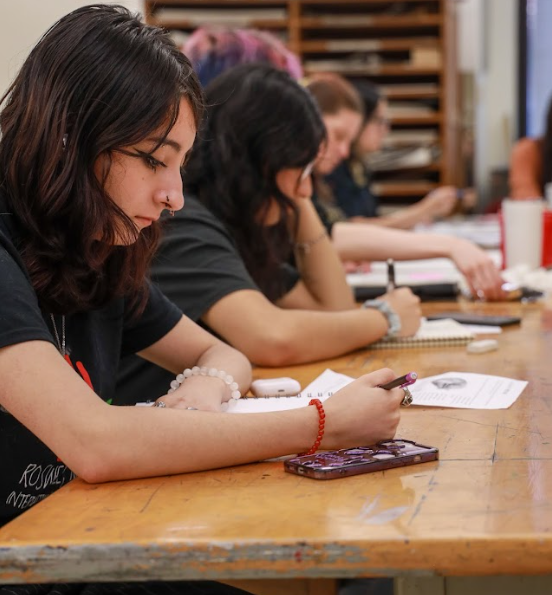
Colleges that offer bachelor’s programs increased from < 15 colleges in four states in the 1990s to 187 colleges in 24 states in 2023.

Number of community college dual enrollment students increased 326,000 in the early 2000s to 1.78 million in 2023.



Six-year completion rate increased among credit students from 36% in 2012 to 43% in 2024.
Students who take prerequisite developmental coursework decreased from 56% in 2015-16 to 40% in 2019-20.
Colleges that consider high school performance when placing students in math increased from 41% in 2016 to 73% in 2023


Colleges that offer bachelor’s programs increased from fewer than 15 colleges in four states in the 1990s to 187 colleges in 24 states in 2023.
Number of community college dual enrollment students increased from 326,000 in the early 2000s to 1.78 million in 2023.
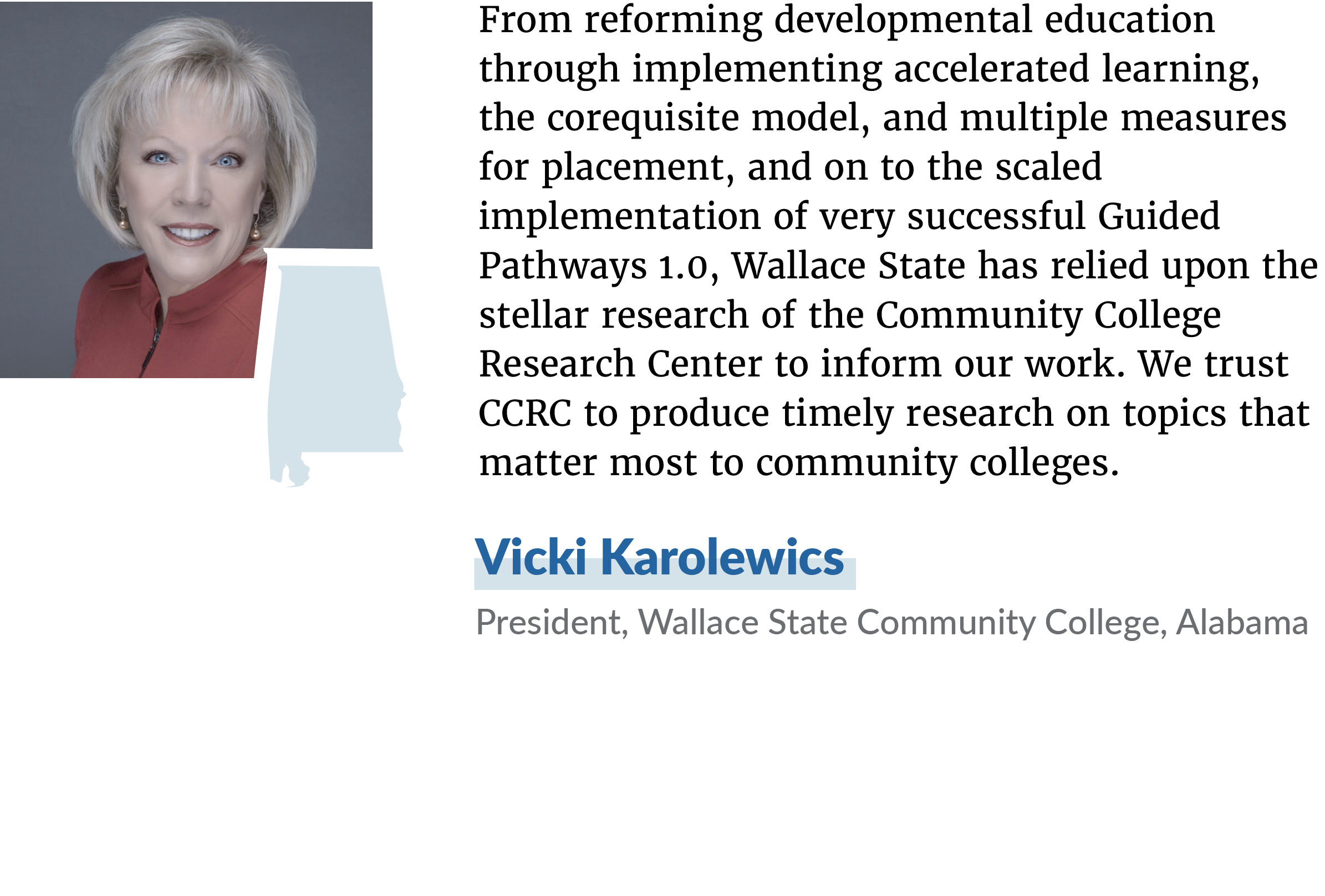

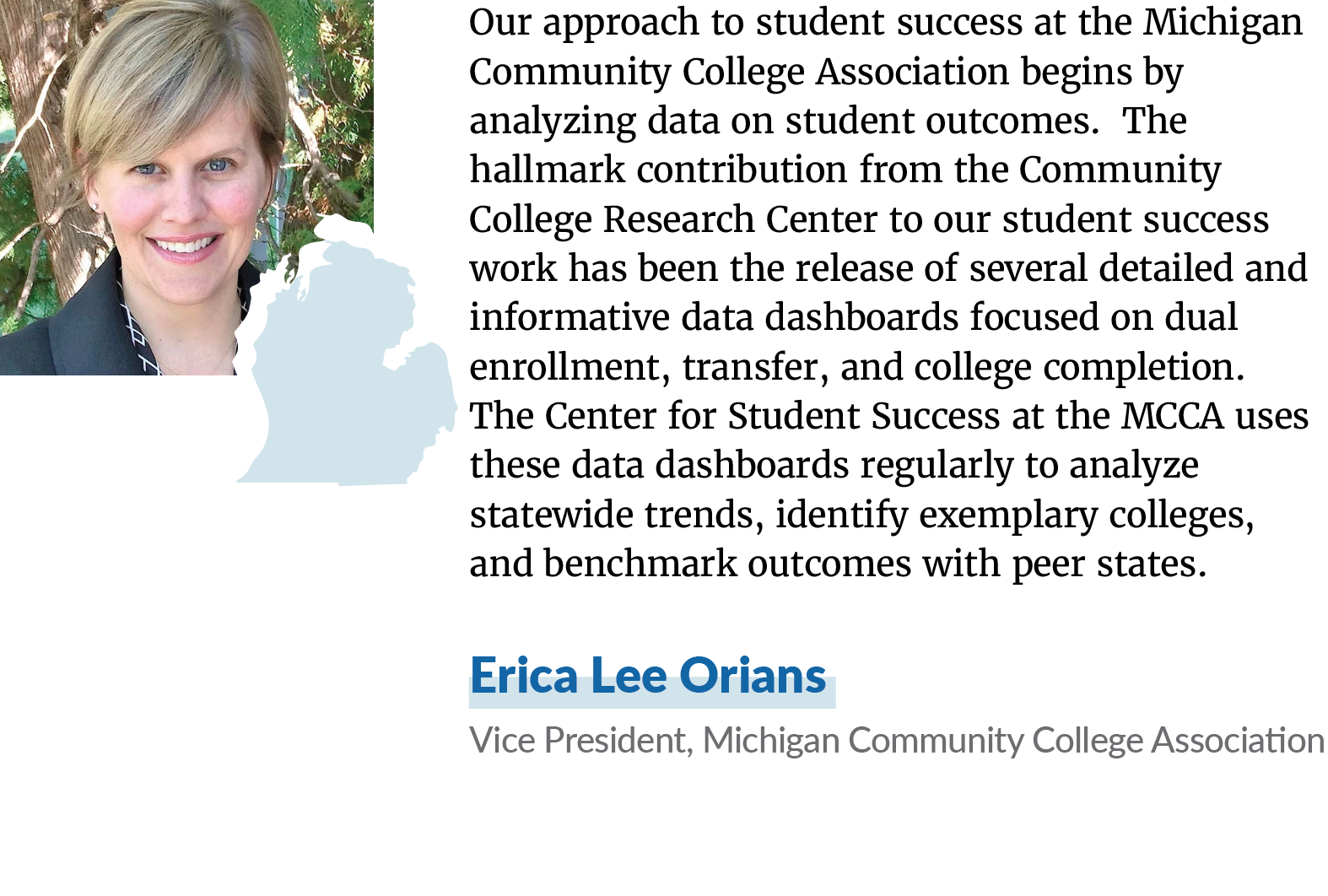
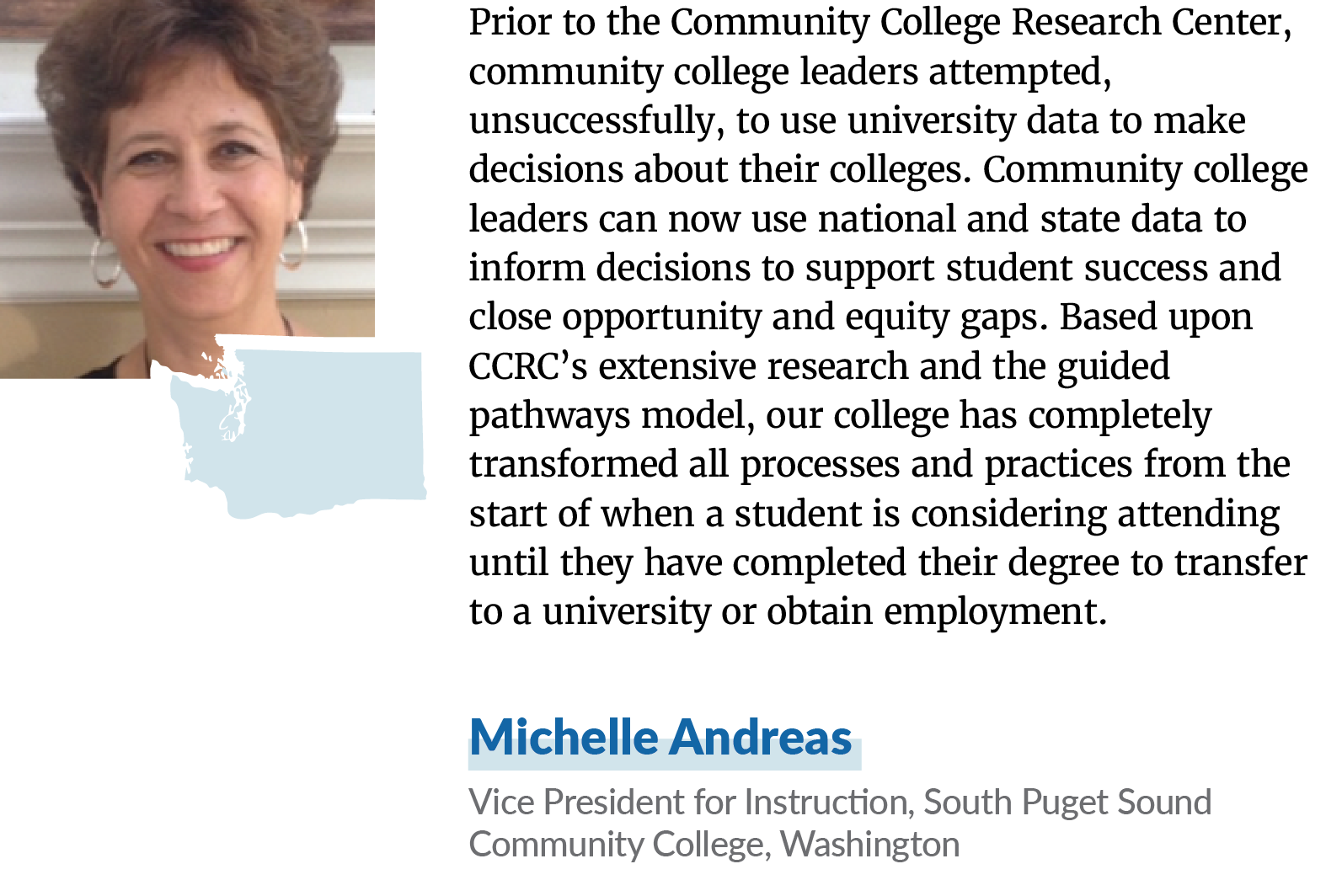

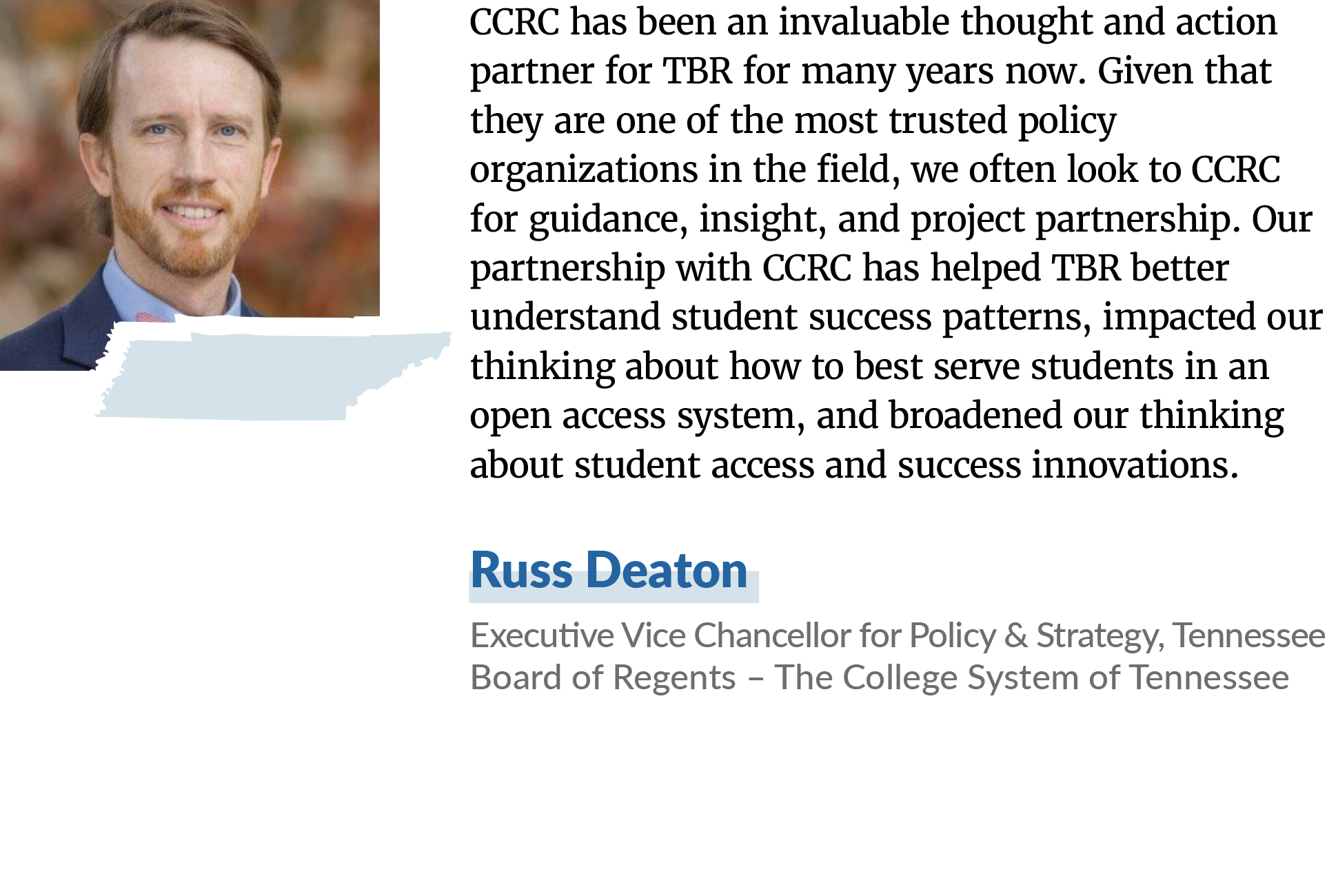
Tom Bailey founds CCRC at Teachers College, Columbia University
CCRC supports Lumina Foundation and other national organizations in launching Achieving the Dream, an initiative to build a “culture of evidence” in community colleges
CCRC, MDRC, and University of Virginia launch the National Center for Postsecondary Research to study interventions to increase college readiness
CCRC and partners establish CAPSEE to study labor market returns to credentials in five states
CCRC and MDRC begin CAPR studies on developmental education reform
Tom Brock becomes director of CCRC
CCRC and partners launch the ARCC Network to support community colleges’ recovery from the COVID pandemic
More Essential Than Ever is published, highlighting the next frontiers of guided pathways reforms
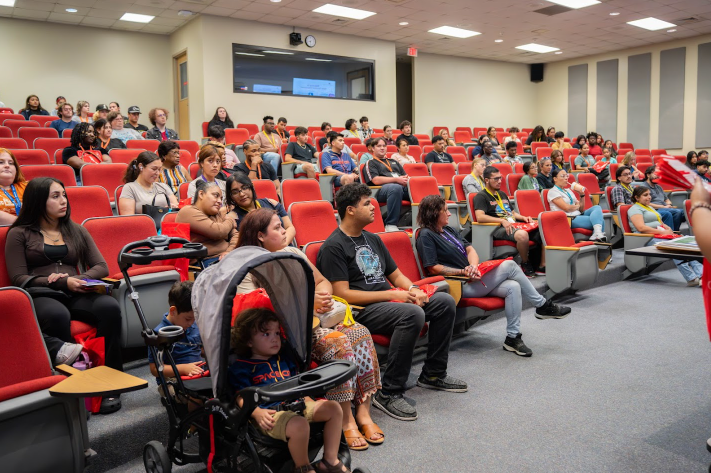
CCRC’s research is as much about learning from colleges as it is about communicating findings in research reports. We partner with institutions to learn about the pressing challenges facing college leaders and faculty and the creative solutions taking shape in classrooms and on campus. Then we explore and test those solutions in qualitative and quantitative studies. Our research takes us across the country, from Arkansas colleges using multiple measures assessment to place students in math and English courses, to Texas colleges expanding the reach and impact of dual enrollment programs for high school students. In Ohio, we’re working with colleges to improve student support in introductory science courses to give students a strong start in STEM disciplines. In Louisiana, we’re investigating how colleges are improving supports in corequisite developmental courses. We’re also working with colleges in Florida, Oklahoma, Oregon, North Carolina, and elsewhere to improve students’ management of their own learning in online courses.

CCRC’s core mission is to provide the research that community colleges need to graduate more students and help them reach their goals. But, 30 years after our earliest days looking at workforce training in community colleges, our work is leading us down new paths as colleges experiment with innovative ways to help their students. In the last few years CCRC researchers have begun studying how community colleges can work with local organizations and industries to train workers for the green economy. By expanding the skills learned in existing programs and creating new ones, colleges can make their students competitive in fields like electric vehicle repair, wind and solar technology installation, and cybersecurity. Other researchers are examining how community colleges can contribute to a stronger childcare workforce by making it easier to transfer and earn bachelor’s degrees in early childhood education, exploring first generation students’ support networks so colleges can better understand their needs and decisions around college, and investigating improvements to programs for English language learners in community colleges. As students and colleges evolve, so does CCRC’s work.
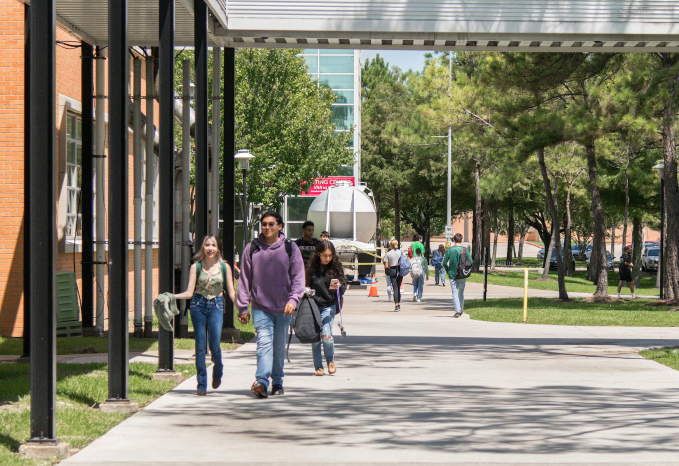
Developmental education and guided pathways have been cornerstones of CCRC research for more than a decade. Through the Center for the Analysis of Postsecondary Readiness (CAPR) and other projects, CCRC has produced strong evidence on effective assessment and placement strategies and course designs. And the guided pathways research team has tracked the reforms at dozens of colleges while refining their ideas of what it takes to implement changes at scale. Both areas of work hit major milestones in 2025: CCRC released a new book, More Essential Than Ever: Community College Pathways to Educational and Career Success, that builds on evaluation lessons and describes the next frontiers for guided pathways reforms. CAPR is wrapping up more than 10 years of work after starting as a federally funded research and development center led by CCRC and MDRC.
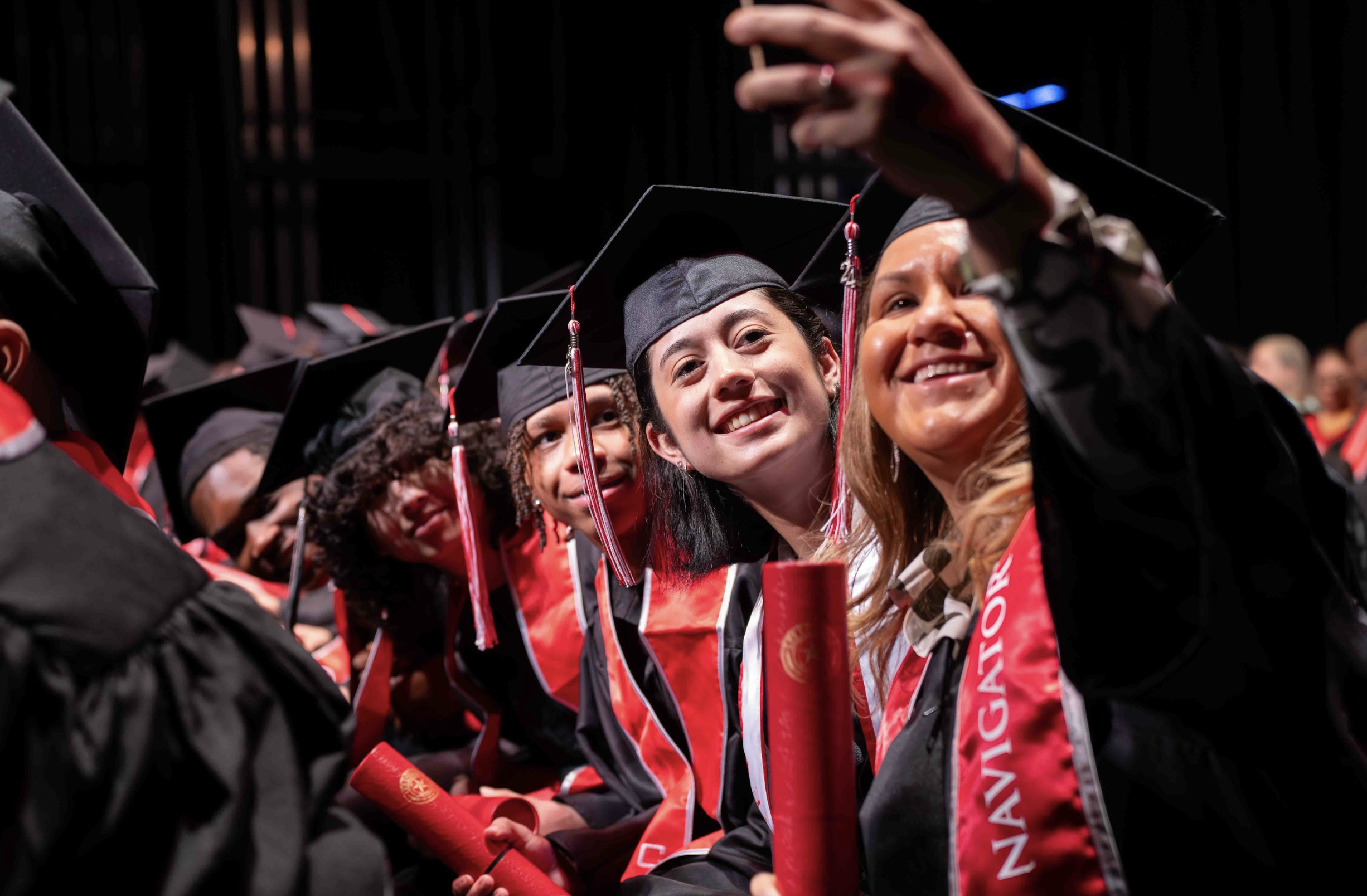
CCRC projects help community colleges put students on pathways to living-wage jobs, work with local industries and workforce groups to align programs, and improve transfer rates from two-year to four-year institutions to ensure that students can realize the value of their degrees. The Unlocking Opportunity Network, a joint research project between the Aspen Institute College Excellence Program and CCRC, aims to increase the number of community college students who complete programs that lead directly to high-value jobs or efficient transfer. CCRC also partners with the Virginia Community College System to improve a scholarship program, Get a Skill, Get a Job, Get Ahead (G3), that targets low-income students in high-demand workforce programs. We are researching how students choose programs of study, and, through the CUNY Policy Lab, developing better measures for understanding the immediate post-college transition along with interventions intended to improve the transition.

At CCRC, we equip early-career researchers with the skills and knowledge they need to conduct high-quality applied research; we also impart an appreciation of the value of community colleges that will inform the rest of their careers. Each summer, we welcome undergraduate interns who work closely with our experts to gain real-world experience in qualitative and quantitative research, as well as exposure to pressing issues in policy. We also hire graduate students from Teachers College who provide fresh insights and offer support as research assistants. The Postsecondary Education Applied Research (PEAR) Fellowship prepares doctoral students for research careers. Fellows emerge from the program ready to partner with policymakers and practitioners to conduct original, high-impact studies to diagnose problems and inform change. Through these opportunities, we strive to help young researchers develop the skills they need to become future leaders in the field of higher education research and practice.
Monthly page views
Newsletter subscribers
LinkedIn followers
Monthly blog views
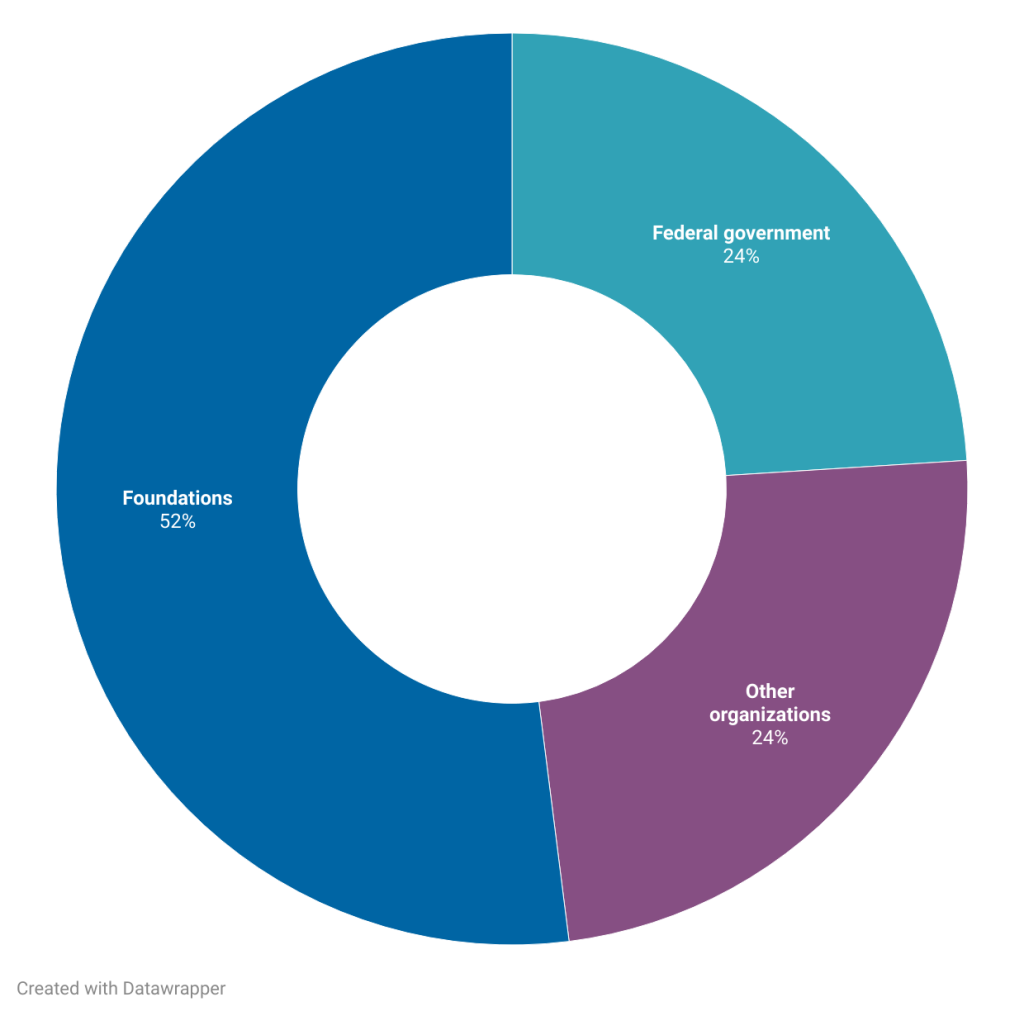
Note: These figures reflect the early termination of four federal grants and one federal contract in April 2025.

Note: These figures reflect the early termination of four federal grants and one federal contract in April 2025.
CCRC’s 2024-2026 Biennial Report was written by Elizabeth Ganga and Shayleah Jenkins and designed by Juliette Isaacs.
Photos courtesy of Lee College and Carol McDonald of Palm Beach State College.
Default
Default